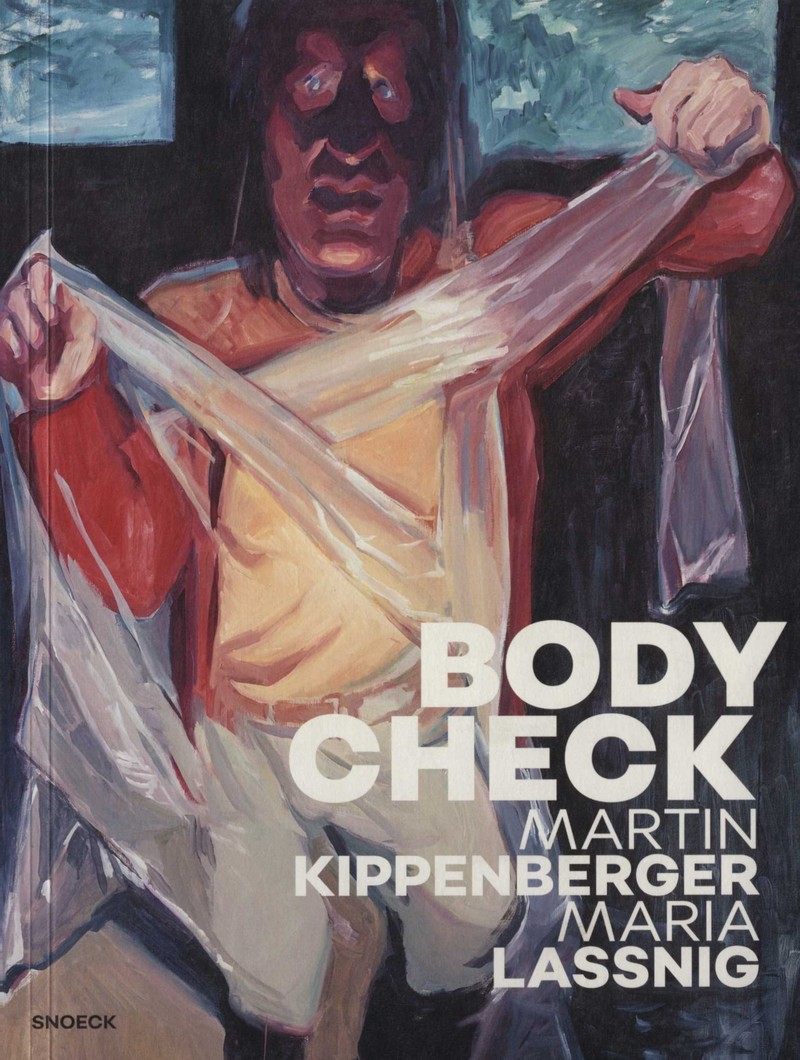Body Check presents two illustrious artists of the late 20th century who, in an era dominated by abstract painting and nascent political correctness, ventured to spotlight in their artistic work the human body, primarily their own. In their depictions, they stage both the female and male body in a grotesque manner, theatrically dramatizing the torso as well as the limbs, head, eyes, hands, and feet. Maria Lassnig (1919–2014) articulated this humorous grotesque discourse across the decades as an artistic means of expression fraught with self-irony and also as a feminist weapon. The self is presented as torso, as animal, with prostheses, or in a permanent state of organic metamorphosis. Martin Kippenberger's (1953–1997) paintings, sculptures, and drawings are pervaded by an enigmatic spirit of the grotesque, in which comical touches and dark humor evoke the painful, even tragic experience of a world where no one is prepared to help anyone else. The self, one's own body, is allegorically caught up in, or fragmented by, artifacts and linguistic constructs. Salvation is a utopia. Lassnig and Kippenberger never met, even though Kippenberger, a native of the Rhineland, made his home in his latter years in the southern part of the Austrian province of Burgenland, not far from Lassnig's home in the province of Carinthia. The kinship between the two artists' choice of motifs is thus all the more striking. Kippenberger most probably saw exhibitions of Lassnig's work (Kunstmuseum Düsseldorf, 1985), and vice versa, after his early death and the growing awareness of his oeuvre, his Austrian colleague evidently studied it closely. In Body Check, body images by the two exceptional artists spanning two decades are now brought together. The exhibition and the book shed new light on the work of both artists while also revealing the entrenched gender-specific roles in international art at the end of the twentieth century.
- / Автор статьи
- / Автор статьи
- / Автор статьи
- / Автор статьи
